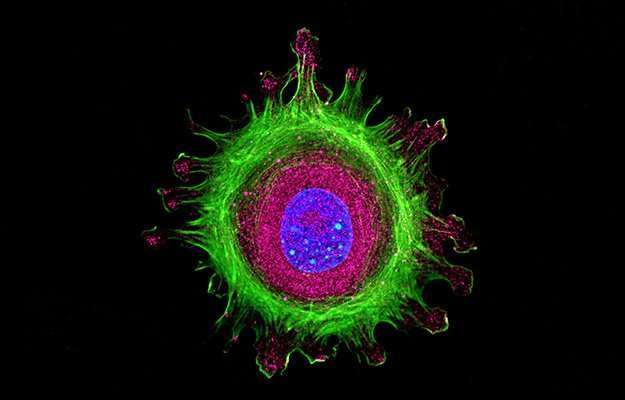You might be familiar with this scene of an old billionaire sleeping in a cryogenically frozen coffin. Longevity has been a subject of science fiction and surreal art illustrations for centuries. Nevertheless, what if there were a pill to push back the aging process, a drug that fights off dementia, fragility, macular degeneration, and cancers that plague old age?
Senolytics, a medicine that selectively kills senescent cells (aging cells), may possess that desired power to battle aging at the cellular level!
Let’s see how the story behind senescent cells and senolytics unfolds!
RELATED: Are You Aging on a Cellular Level? Cutting Edge Peptide Therapy May Soon Be Able To Help With That
Battling Senescent Cells With Senolytics:
Approaches to Longevity

Because of limited human experience, science has widely different approaches to conceptualized aging and prolonging lifespan/healthspan. The up-to-date knowledge is energy production in aging cells can malfunction, causing ramped-up immune responses that drown aging tissues deep in the sea of inflammatory molecules.
Besides, there have also been admirable successes with research on other aspects of aging. Yet, how could all of these pieces be put together to solve the aging puzzle that remained a mystery?
According to a new study published in Nature Metabolism, scientists have now discovered three potential anti-aging pathways in mice: eliminating senescent cells, battling inflammation, and low cellular energy production. This makes it more feasible to connect the dots of the aging mystery.
But first, let’s meet the good guy – NAD.
NAD | The “Celebrity” Molecular Worker
Nicotinamide adenine dinucleotide (NAD) is an essential cofactor in all living cells. This molecule is a hard worker in the mitochondria factory: it helps generate energy for the cell.
NAD also plays a vital role in other fundamental biological processes such as cell signaling, gene expression, metabolism, DNA repair, etc.
So why is NAD a character in this aging story? Sadly as people age, the body cannot produce adequate amounts of NAD, or as much as it used to. Without this critical worker, the mitochondria power plant goes out of service, turning normal cellular metabolism into dysfunctional.
Age-related NAD depletion also contributes to:
- DNA Damage
- Cellular Senescence
- Epigenetic Alteration
- Potential Telomere Attrition
But does aging just mean the natural decline of the NAD level? Could it be because of another mysterious culprit that destroys this “celebrity” molecular worker?
CD38 | The Fallen Molecule
CD38 is a molecule that features several physiological processes, including immunity, glucose and lipid homeostasis, and inflammation. As highlighted in a 2016 study, this immune molecule plays double roles as an aging culprit. Conversely, it boosts inflammation and destroys NAD.
Using tissue from both mice and humans, scientists traced CD38 to a type of immune cell called M1 macrophages (or “big eaters,” literally). These M1s increase bodily inflammation and damage DNA as people age. But how exactly do these “eaters” commit their “crime”? The research team discovered that these immune traitors churn out a massive amount of CD38 as the cells age, which, sequentially, breaks down the good guy NAD.
Here’s the story so far: aging triggers M1 macrophages (a type of immune cell) to produce CD38, a nasty chemical that eats up NAD. But how can we stop this scenario from perpetually happening as a destiny of aging?
In an unexpected twist, the evidence points to a masked character – the senescent cell.
Senescent Cells | The Master-Level Culprit

When energy production in aging cells stops, these cells, rather than self-destroying because of DNA damage, turn into senescent cells.
RELATED: Rapamycin: How To Slow Down The Way Our Cells Age
Senescent cells are beat-up zombie-like cells that emit inflammatory chemicals called SASP (senescence-associated secretory phenotype), further contributing to inflammation and damage to the neighboring cells.
Connecting the Dots
Researchers discovered that these zombie cells significantly increase the amount of CD38. To make it an analogy, senescent cells are the aging master-level culprit, emitting “toxic waste” SASP molecules that direct immune cells to create more CD38.
Will wiping out zombie cells reduce the inflammatory CD38 and save NAD for good?
To find the answer, scientists injected the mice with an aging-mimicking drug (the drug damaged DNA and increased zombie cells and CD38). They then selectively destroyed zombie cells. This resulted in lowered CD38 levels and preserved NAD within cells. Voil – case solved!
After all, senescent cells seem to be the missing piece in the puzzle. They break the cell’s energy production, drive inflammation, and decrease NAD levels.
Can Senolytics Plug the Cellular Leak?
The unexplained decline of NAD levels can now be explained. It’s not the faucet problem of the body’s ability to create more NAD, but rather the leaky sink problem where senescent cells break down NAD too fast.
Senolytics is a type of medicine that selectively targets and destroys senescent cells. The above discovery could give senolytics an unexpected secondary effect of increasing NAD, which was unknown before.
Pharmaceutical firms are now also examining dozens of potential senolytics in a race to present one to markets. This doesn’t undermine the importance of NAD supplements. Instead, supplements will be part of the equation.
But filling the “NAD drops” sink with NAD supplements will be insufficient to resolve the problem. Supplementation will be more effective if the leak is plugged – with senolytics to kill senescent cells and decrease CD38 levels.
In the end, if science can detect the masters behind the “aging cult”, instead of chasing the little guys, why don’t we target the boss with potent medicine like senolytics?
Consider Senolytics to treat your aging symptoms? Contact YM today and receive a FREE consultation session on Performance Medicine and Optimization at our Ocala, Florida, Fruitland Park, and Daytona offices!
UP NEXT:

